Lo Mein
This recipe was inspired by Dickson Hee's Oyster Lo Mein recipe from The Breath of a Wok by Grace Young and Alan Richardson. It's described as Cantonese comfort food, and is better than any takeout Lo Mein we've ever had.
The Breath of a Wok is one of our favorite cookbooks, and the name refers to wok hei which is the flavor and aroma developed in foods when cooked over high open-flame heat in a well seasoned wok with fat or oil. The book is focused on the wok itself along with techniques of use through recipes.
The Breath of a Wok (External Link)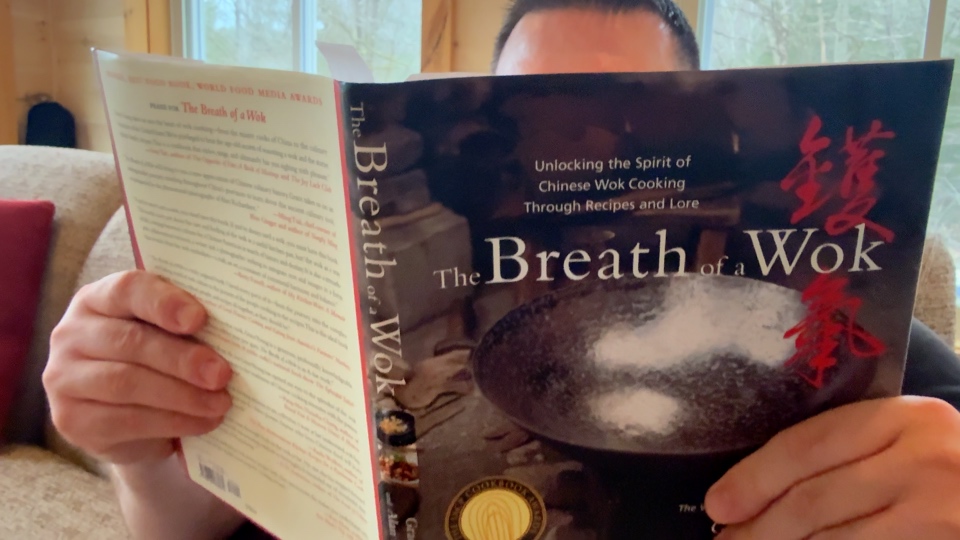
The best way to describe wok hei is the flavor you get when outdoor grilling. The intense heat browns the surface of the food, fats and oils drip down and combust in the flames sending smoke up around the food, and charred edges develop complex flavors. Any wok stove worth it's weight will put out at least 100,000 BTU/Hr. Most indoor consumer-grade gas range burners top out at 20,000 BTU/Hr or less. While you can certainly cook a good steak indoors with a cast iron skillet, you won't develop the same flavors you get from grilling. This lo mein dish depends on a wok burner and wok hei.
Wok Vortex Burner (External Link)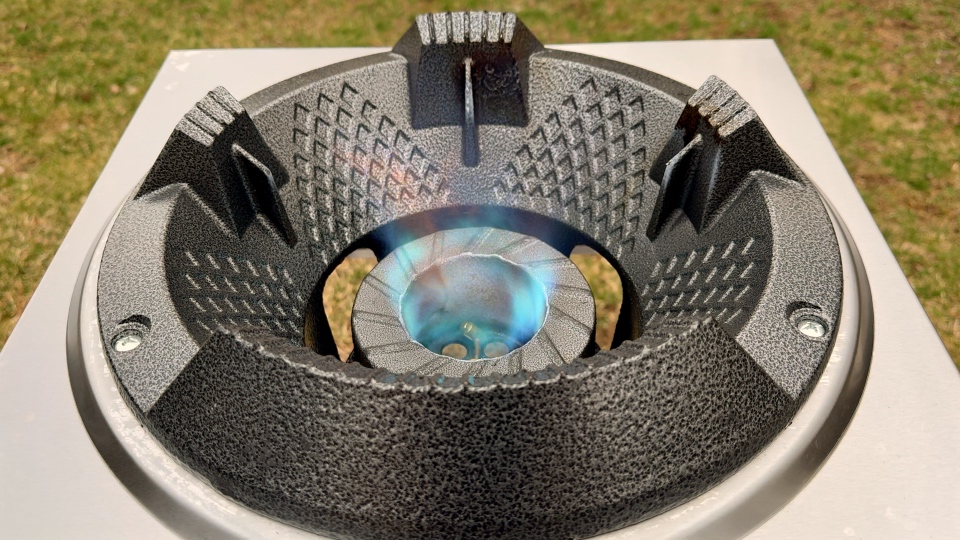
One of the main flavors of this dish comes from garlic-infused oil. Mincing the garlic helps to release more flavor and allows it to easily cling to the noodle surfaces. Noodles with garlic oil are tasty on their own, but are further enhanced by the aroma from scallions. Slicing the scallions lengthwise can be an awkward process, but the long strips intertwine with the noodles for a more cohesive dish. We add significantly more scallions than the original recipe calls for.
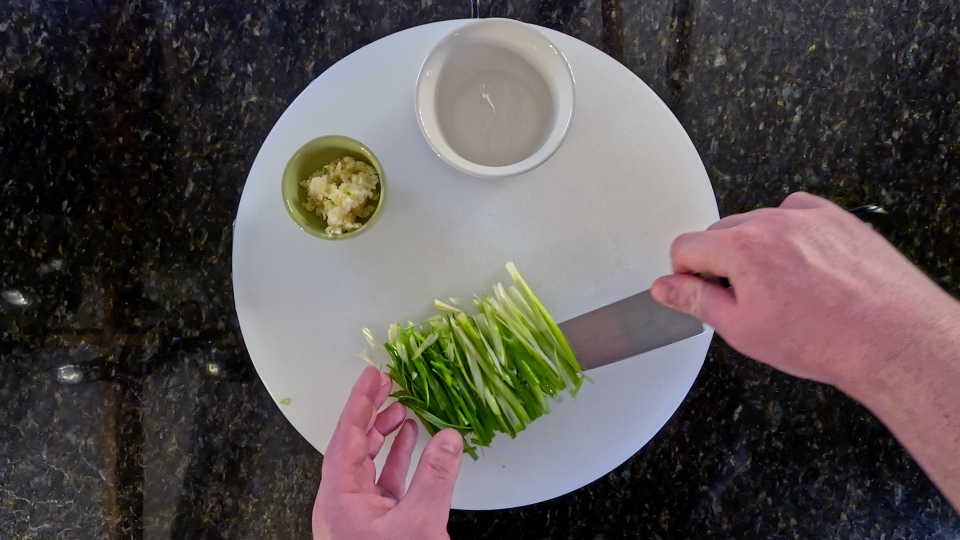
We experimented with different noodles and pastas to explore flavor and texture. Fresh noodles with diameters thicker than standard spaghetti have a bounce and chew that complement the dish. Unsurprisingly, noodles made with egg have an egg flavor that is an important part of the profile. In our region, most grocery chains carry a fresh chinese egg noodle of some type kept in a refrigerated case. The original recipe calls for an al-dente cook which can be subjective on its own. Experiment with what you like.
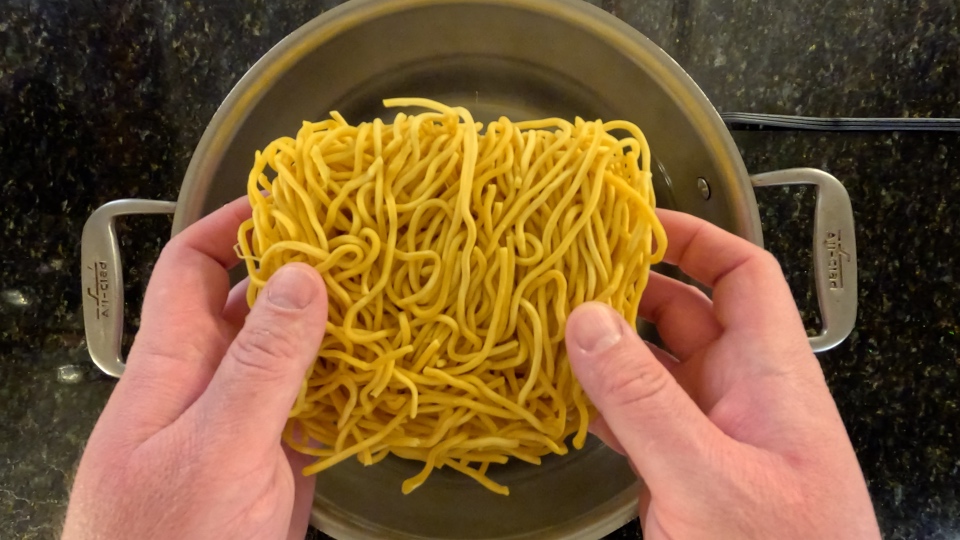
Oyster sauce is one of the primary flavors in almost every lo mein dish. While you may have ordered chicken lo mein, oyster sauce is likely the magic flavor. Most oyster sauces are artificial, but Lee Kum Kee offers both artificial and natural sauces. We recommend Lee Kum Kee Premium Oyster Sauce for this dish - just be aware that once you have it the local take-out may no longer be up to snuff. It is a flavor bomb of natural oyster extracts, salt, sugar, and monosodium glutamate (MSG). MSG is natural and enhances savory flavors. Even if restaurants claim not to add MSG directly in crystal form, they likely add it indirectly through products like oyster sauce. It also occurs naturally in foods like tomatoes and mushrooms.
LKK Premium Oyster Sauce (External Link)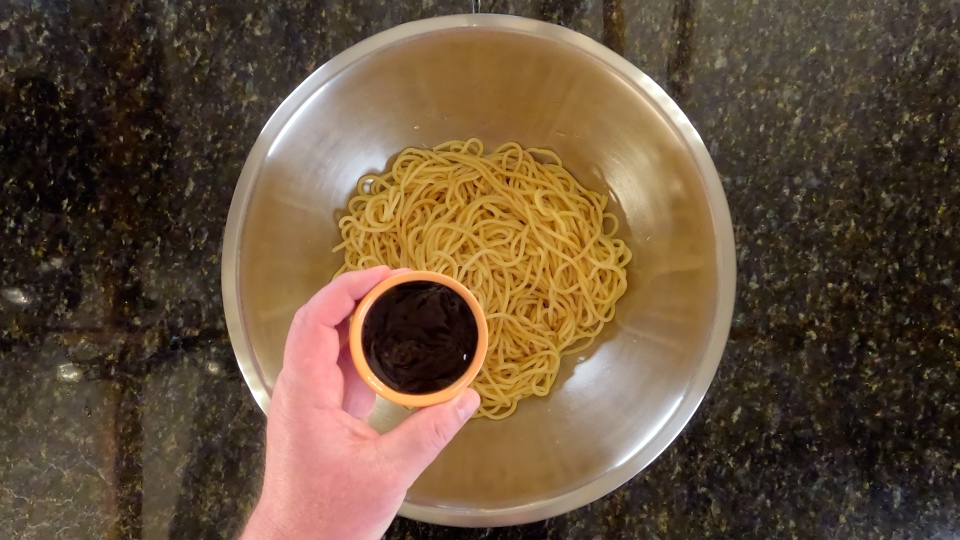
One of the surprising things we learned from the original recipe is that the liquids are added to the noodles before stir-frying. This allows for even distribution and prevents the noodles from clumping. Normally we would reserve sesame oil until the end of cooking to preserve the volatile flavors and aromas, but after experimenting with the recipe the book is right. We slightly increase the liquid amounts, including the oyster sauce. Since the oyster sauce includes sugar, we then omit the white sugar called for in the book.

Make sure to have everything at hand and prepped as this dish goes quick. It takes some practice to get the temperatures just right. Not enough flame and you won't get the wok hei. Too much and you will get cinders. It is similar to moving food around a charcoal grill based on the heat output.
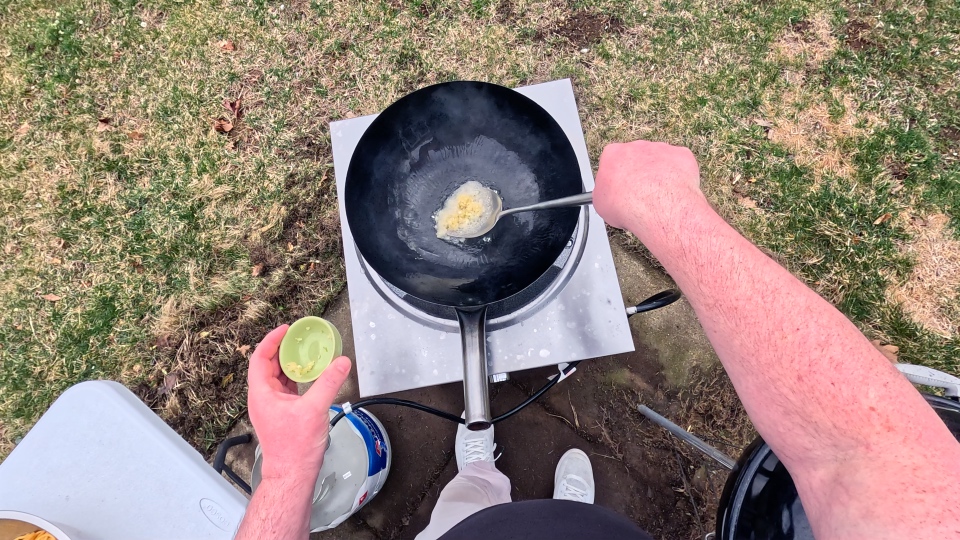
The liquids on the noodles will quickly evaporate and begin to caramelize. Some sticking may occur due to the wheat and sugars, but with a properly seasoned pan and the right amount of heat you should be able to loosen a rogue noodle or two. Resist the urge to add more oil as it will make the final result greasy. A wok shovel is recommended over a wok ladel. Keep the food moving and things will turn out fine. If you need to stop, cut the heat and protect the food by placing the wok shovel under it. Add a couple dashes of ground white pepper to finish the dish.
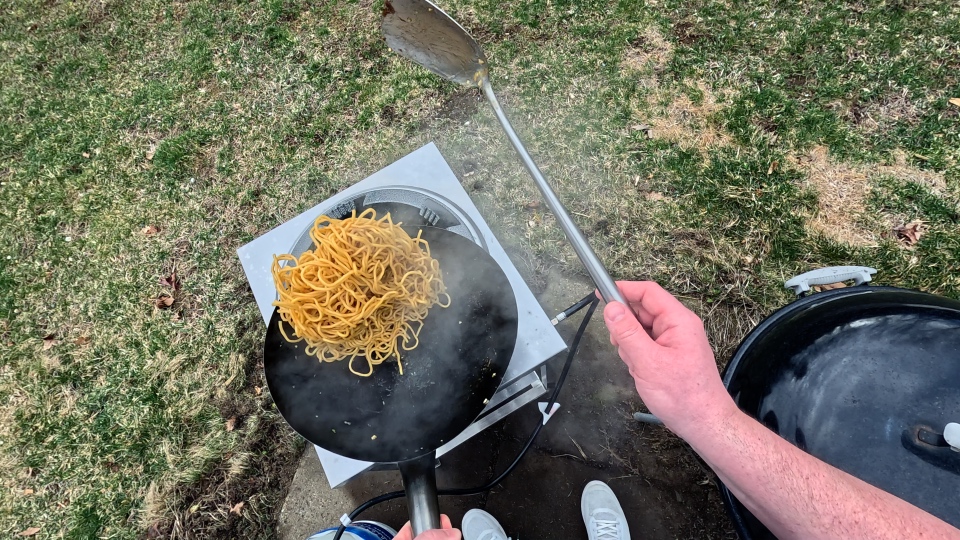
This is an elemental form of lo mein that once mastered can serve as the basis for more complex versions with proteins and vegetables. The more complex versions don't significantly change the base flavors established here unless you add seasoned meats like Char Siu Pork. Swap the peanut oil for rendered animal fat if you make a meat version. Our house favorite addition is wild mushrooms which we stir-fry separately and then add to the lo mein before the scallions.
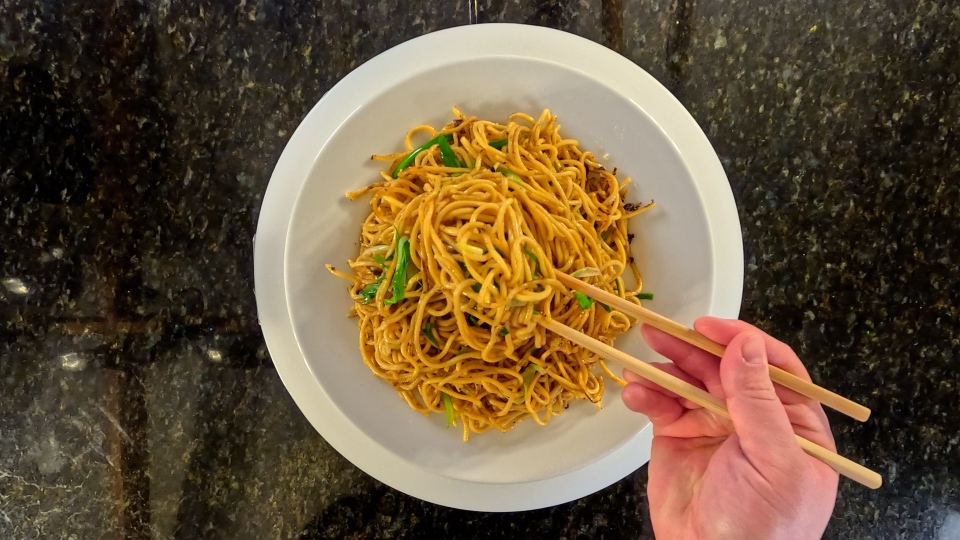
Lo Mein
Serves 3 as a main or 6 as a side
Ingredients:
- 2 Tablespoons Morton Kosher Salt
- 12oz Fresh Chinese Egg Noodles
- 1 Tablespoon Minced Garlic
- 1 Bunch Scallions
- 1/4-C Oyster Sauce
- 1 Tablespoon Soy Sauce
- 1 Tablespoon Sesame Oil
- 1/8 Teaspoon Ground White Pepper
- 2 Tablespoons Peanut Oil
Instructions:
- Mince the garlic. Cut the green onions in half, then slice lengthwise into strips.
- Bring 1 gallon of water to a boil and add the salt. Add the noodles and cook to desired doneness. Drain and rinse the noodles in two changes of cold water to stop the cooking process and remove surface starch. Drain and reserve in a separate bowl.
- Add the sesame oil, oyster and soy sauces to the noodles. Mix well to combine.
- Heat a 14" wok over medium heat and swirl in the oil to coat the surface. Once faint wisps of smoke appear, add the garlic and stir fry for 10-15 seconds. Toss the noodles in the bowl to ensure the sauce on the bottom in incorporated then add to the wok. Increase heat to medium-high and stir-fry for 2-3 minutes.
- Reduce the heat to medium, add the green onions and stir-fry for 10-20 seconds. Add the white pepper, and stir-fry an additional 10 seconds. Serve.
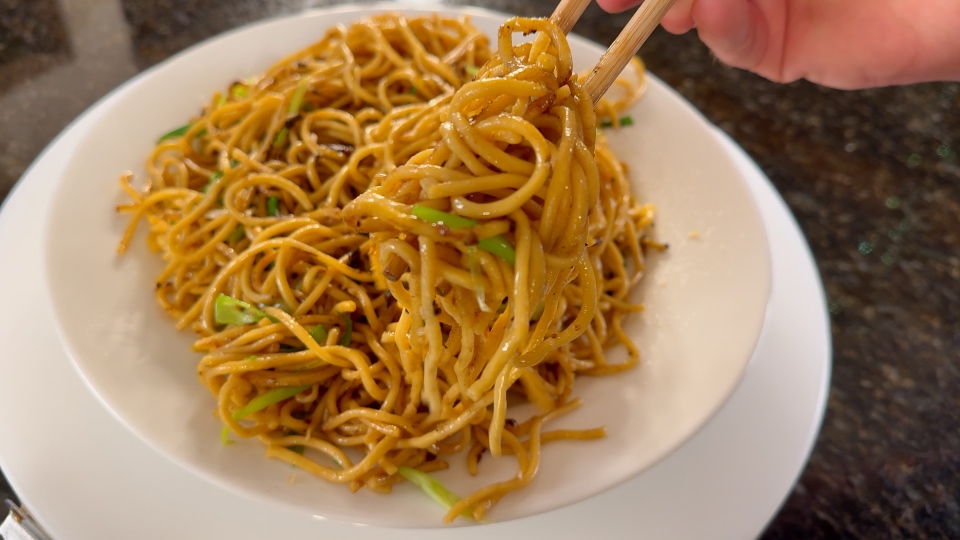
This dish can easily be made in less than 30 minutes on a weeknight. Hot and fresh out of the wok will provide the most wok hei flavor, but everyone knows that a midnight snack at the fridge is a close second. We ordered some cheap takeout containers which is a convenient and fun way to store leftovers. Let us know via YouTube if you give this lo mein recipe a try or have any tips to improve our wok game. Thanks!

Copyright © 2024 - 2025 Purpose Circus


